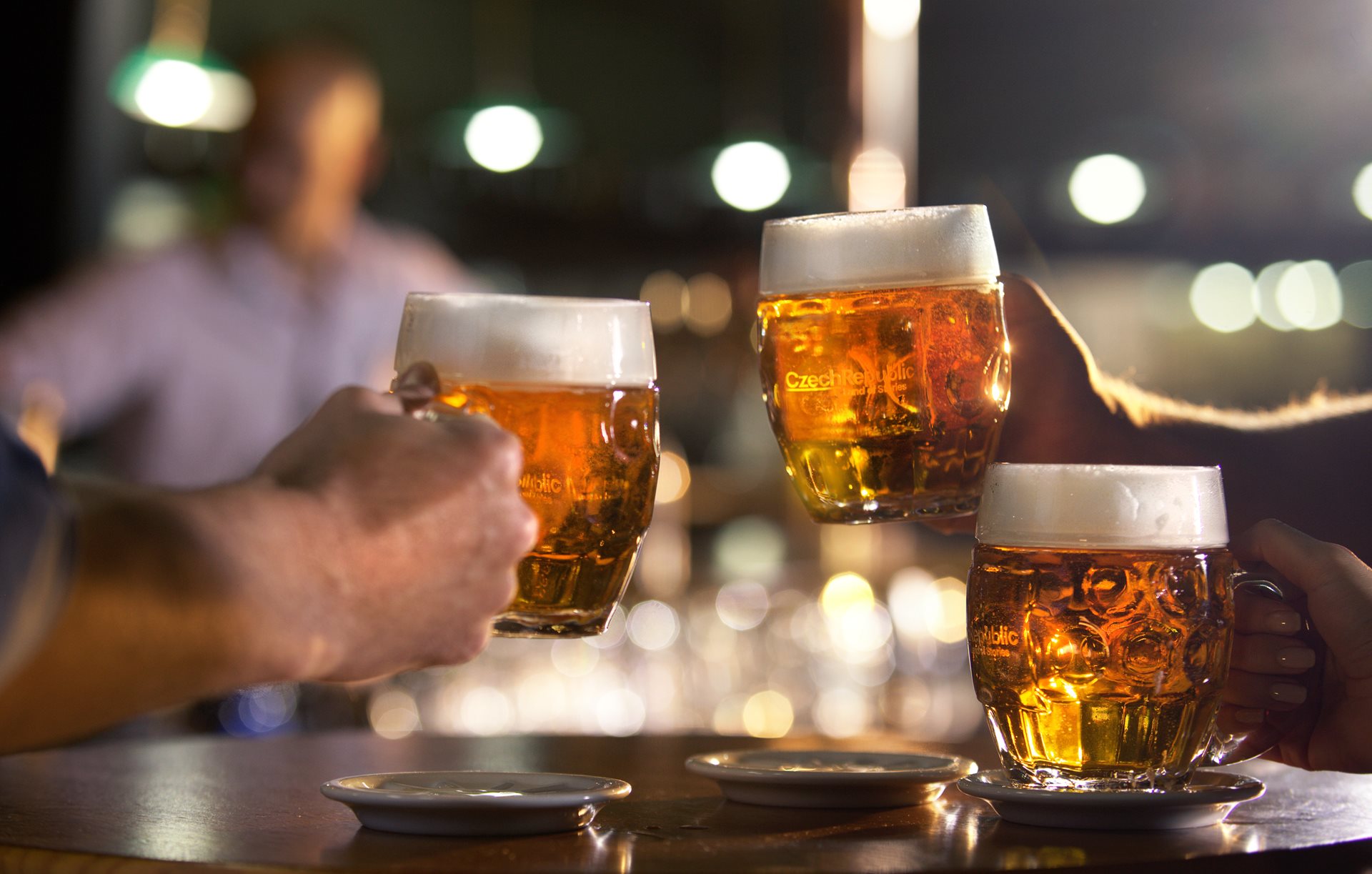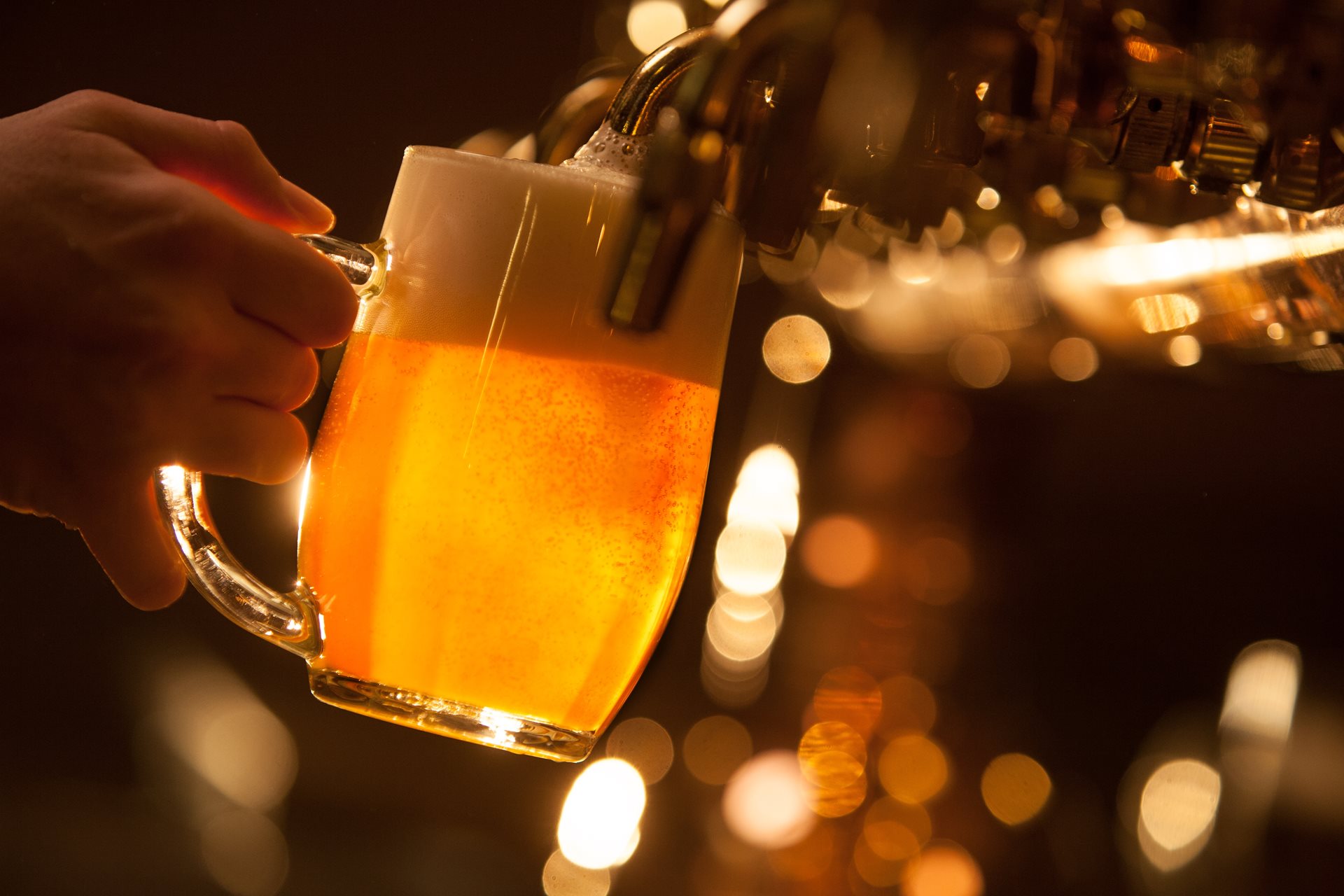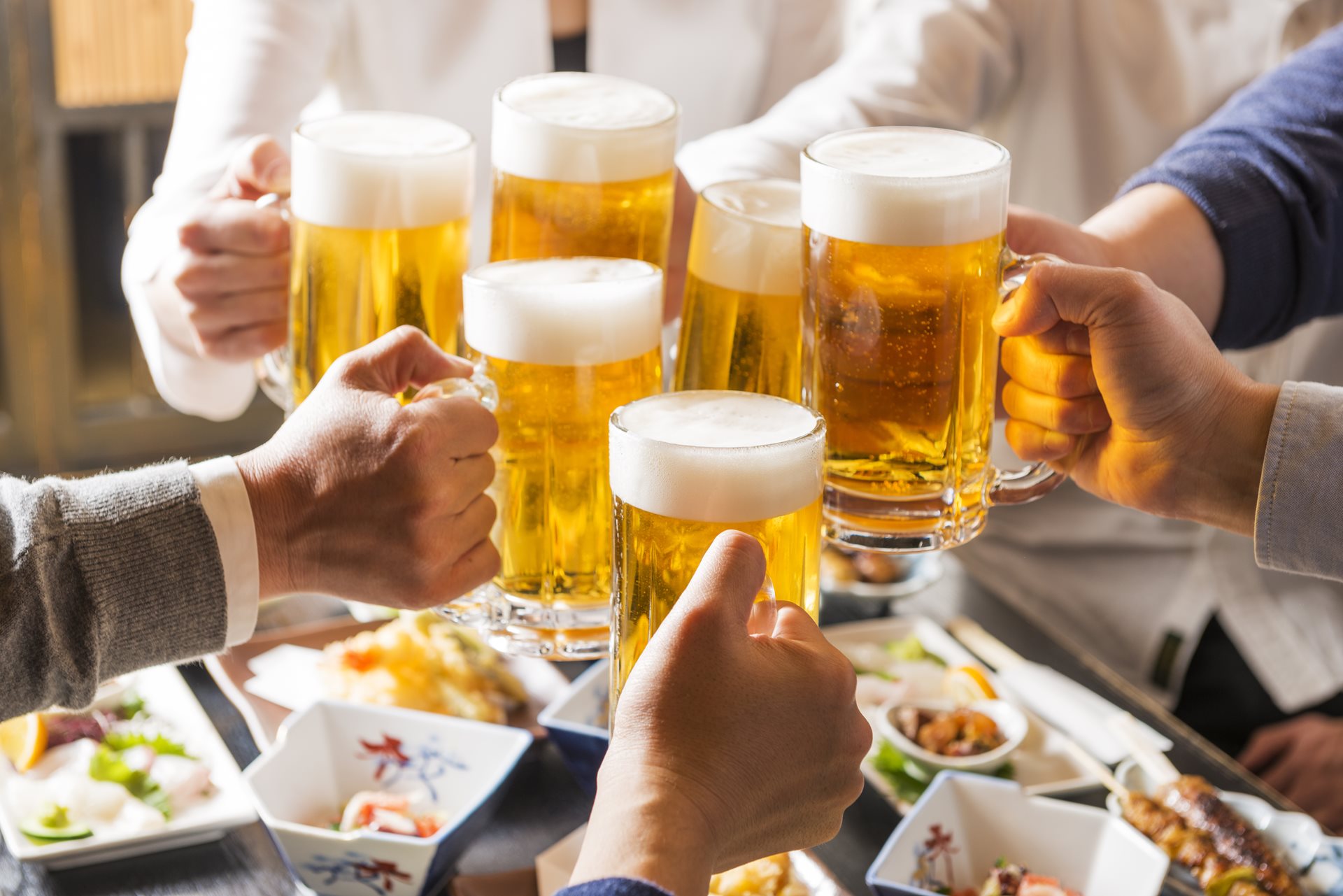Do you like beer? If yes, continue reading! We will peek into its production, recommend the most famous restaurants, and introduce the best-known Czech beer specials.
Vine Shrouded in Myth
Many people think that hops are the most important in beer brewing. But the green cones of this climbing plant are only added to the beer as spice. About four cones are needed to make a pint. In the past, every hand mattered in the August hop harvest and thus the phenomenon of the temporary hop harvesting jobs arose in the Czech Republic, when students picked the hops together just before the school year started. If you want to know more about it, visit the Temple of Hop and Beer in Žatec. You’ll learn everything you want to know about hops and beer in the heart of the most famous Czech hop-growing region.Dočesná - Žatec beer festival

Water is the Basis!
Water, the basis for the production of beer, must be of the highest quality since it determines its taste and aroma. Therefore, every brewery protects its water source. Many of them are actively involved in the protection of the natural heritage.Our Tip!
Take the virtual journey to the depth of 300 metres in the Budvar Brewery visitor centre. That’s the depth where the clear water comes from – a thousand-years-old artesian well, giving the famous beer its great taste.

The Essence of Gold
Malt is the third ingredient and it is made of specially cultivated types of grain. It gives the beer its beautiful golden colour. The rest is done by the yeast thanks to experienced brewers. Every brewery has its original procedure, thanks to which the beer has its specific flavour. But don’t worry, many of them share their secrets. Come to one of the special tours to learn about the secrets of beer brewing and to taste the beer.
Hladinka, šnyt or mlíko?
Did you know that the way the beer is tapped also influences its final flavour? A skilled tapster can offer you four different flavours throughout the evening, despite having one type of beer on tap. Hladinka – or flat top is a basic technique when the glass contains the right ratio of beer and foam. Šnyt has a 1:1 foam and beer ratio. It is sweeter and you don’t have to drink the beer fast as the foam protects it from oxygenation. Mlíko – ‘milk’ is almost all foam. And the last tapping technique is čochtan, a beer without foam that has to be drunk quickly to quench your thirst. Some breweries or pubs offer a beer tapping course, such as the Prague Lokál chain or the Moravian Radegast brewery.Beer Specials – Favourite Joys
Every year, breweries make popular beer specials at various occasions. The Easter specials are spring beers, light and refreshing. Some are even green as the brewers use other herbs in the production, such as young nettles. Summer editions tend to be sourer, refreshing and with a low alcohol content to help quench the thirst and complement the summer ease. Autumn and Advent specials have a fuller taste and they are often flavoured with honey and spices.
Brew Your Own Beer? No Problem.
For 12 litres of beer we need:650 to 850 g of malting barley
12 litres of soft water
100 g hops
250 to 300 g crystal sugar
20 g yeast
How to make it
Prepare the malt as follows: In a container, preferably wooden, pour water over pure grain malted barley (about 650 to 850 g for 12 litres of beer) and leave it to soak for 24 hours. Then drain the water and leave the barley to germinate for a further 24 to 36 hours in the same container or in a wet canvas bag, stirring the barley frequently to break off the germ. This interrupts germination and promotes sugaring. Then roast the barley gently until golden yellow. Over-roasting the barley gives the beer a darker colour but also a good flavour.
Crush the roasted barley and start brewing the beer: Boil the barley in 12 litres of soft water for about an hour. Use only an enamelled pot, which must not be battered on the inside, so that the beer does not get an iron taste. At the same time, in another enamelled pot, boil 100 g of hops from the last harvest (if the hops are older, up to 150 g) in a thinner linen bag in one litre of water for 20 minutes. The procedure can be simplified: boil the crushed malting barley for only one hour. Then dump the hops and sugar into the same pot and boil everything for another hour.
This litre of decoction is then poured into the water in which the malted barley is boiled and strained through a clean cloth. Add 250 to 300 g of granulated sugar to the strained decoction and boil for a further two hours.
During the boiling process, note the evaporation, remove the froth and top up the boiling water so that there is always 12 litres of liquid in the pot. Strain the decoction and leave it to cool. Stir 20 g of crushed yeast into the lukewarm water. Cover the pot with a cloth napkin and leave to ferment for 24 hours. Skim off the foam and pour the decoction into bottles, leaving 1 to 1,5 dl of empty space at the neck, cork well and refrigerate for 14 days.
.jpg?width=1920&height=1280&ext=.jpg&quality=35)


.jpg?width=1200&height=1200&ext=.jpg)


















